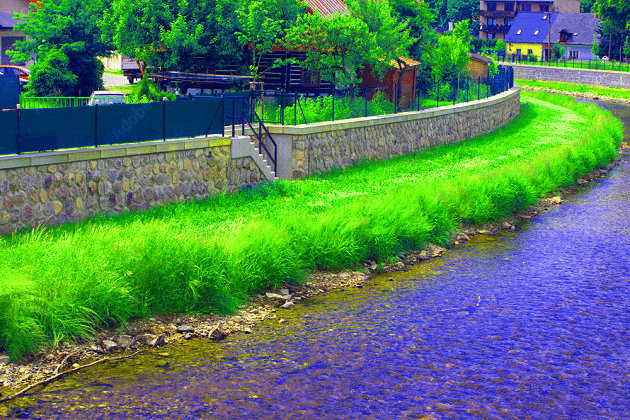How to Build a Retaining Wall on a River Bank: A Step-by-Step Guide
How to Build a Retaining Wall on a River Bank: A Step-by-Step Guide
Retaining walls are a vital component when it comes to managing water flow and preventing soil erosion along river banks. If you’re considering building one to protect your property, this step-by-step guide will walk you through the process. We’ll explore the essential aspects of How to build a retaining wall on a river bank to ensure your project’s success.
Understanding the Importance of a River Bank Retaining Wall
A retaining wall serves multiple purposes, particularly when constructed on a river bank:
- Erosion Control: River banks are susceptible to erosion due to the constant flow of water. A retaining wall prevents soil erosion and safeguards your property from being washed away.
- Water Management: By diverting and managing water flow, retaining walls help regulate the river’s course, reducing the risk of flooding.
- Aesthetic Appeal: Retaining walls can also enhance the beauty of your property by providing a well-structured landscape.
Before You Begin: Planning and Preparation
Before you start building a retaining wall on a river bank, it’s crucial to undertake careful planning and preparation:
- Check Local Regulations: Research your local zoning regulations and acquire any necessary permits.
- Site Assessment: Evaluate the site’s topography, soil type, and the intended height and length of your retaining wall.
- Materials: Choose suitable materials for your retaining wall. Common options include concrete blocks, natural stone, or timber.
- Tools and Equipment: Gather the necessary tools, which may include a shovel, level, mallet, and safety equipment.
Step 1: Excavation and Foundation Preparation
- Mark the Area: Use stakes and string to outline the wall’s location. Ensure the base of the wall is set back slightly from the river bank to prevent undermining.
- Excavate the Foundation: Dig a trench for the wall’s foundation, making it wide enough to accommodate the base materials. The depth will depend on your wall’s height.
- Add Base Material: Fill the trench with gravel or crushed stone, and compact it to create a solid foundation.
Step 2: Laying the First Course
- Place the First Course: Start at one end of the trench and lay the first row of retaining wall blocks or stones. Ensure they are level and tightly packed together.
- Use a Level: Check the blocks’ level and alignment as you progress. Adjust the base material as needed to maintain a level foundation.
- Backfill: Fill the space behind the first course with gravel or stone. This adds stability and drainage.
Step 3: Building the Wall
- Add Subsequent Courses: Continue adding courses of retaining wall blocks or stones, staggering the joints like bricks. Use adhesive or pins to secure the blocks in place.
- Check for Alignment: Periodically use a level to ensure your wall is straight and level. Make adjustments as necessary.
- Compact Backfill: After each course, compact the backfill to prevent settling.
Step 4: Drainage and Backfill
- Install Drainage: As you build your retaining wall, add drainage pipes or gravel behind the wall to direct water away from the structure.
- Backfill Gradually: Backfill the space behind the wall, but do so gradually to avoid putting too much pressure on the structure.
Step 5: Finishing Touches
- Capping: Add a cap or coping to the top of your retaining wall for a finished look and to protect the wall from weathering.
- Landscaping: Plant grass, shrubs, or ground cover around the wall to enhance its aesthetic appeal.
Maintenance and Ongoing Care
Once your river bank retaining wall is in place, it’s essential to perform regular maintenance:
- Inspect Regularly: Check for signs of damage, settling, or erosion.
- Clean Drainage: Ensure drainage systems remain clear of debris.
- Repair as Needed: Address any issues promptly to prevent larger problems down the line.
Building a retaining wall on a river bank may be a substantial undertaking, but the benefits in terms of erosion control, water management, and aesthetics make it a worthwhile project. By following this step-by-step guide and considering the site-specific factors, you’ll be well on your way to a successful project that will protect your property for years to come.
For more in-depth guidance on “How to build a retaining wall on a river bank,” visit our website at cheapretainingwallideas.com.
Remember, safety is paramount when building retaining walls. Always use appropriate safety gear and follow best practices in construction to ensure the longevity and reliability of your river bank retaining wall.
